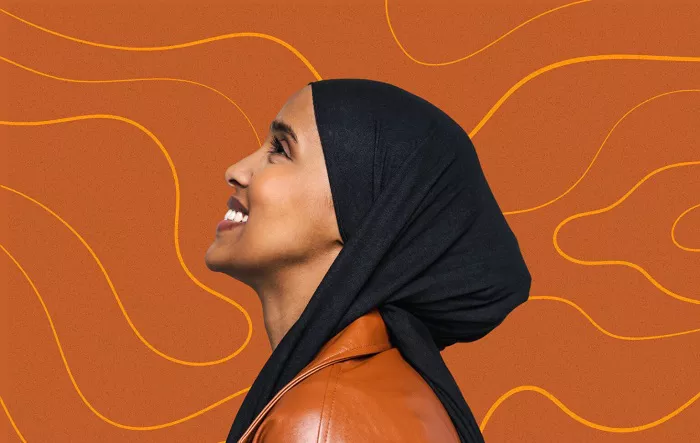For many who wear the hijab daily, hair care often takes a back seat — sometimes due to a lack of visible need or simply not knowing where to start amid a sea of products and advice. However, wearing a hijab, while protective in some ways, also presents unique challenges for maintaining healthy hair. Experts say small adjustments in your hair care steps can make a big difference.
The Hidden Protection of the Hijab
Surprisingly, the hijab can shield your hair from external stressors. “Wearing a hijab daily actually provides a barrier against environmental damage like sun exposure, pollution, and harsh weather,” explains celebrity hairstylist Michael Douglas. These factors can lead to dryness, fading color, and changes in hair texture over time.
However, not all scarves are created equal. “Light-colored scarves may allow more UV light through, whereas darker shades offer better sun protection,” says Charlotte Mensah, founder of London’s Hair Lounge and a leading expert in Afro and curly hair.
Fabric Matters: Reduce Friction and Lock in Moisture
While your hijab can help retain moisture, the type of fabric is key. Cotton, a popular choice, can strip hair of its natural oils, leading to dryness and breakage. Mensah recommends switching to silk or satin scarves, or at the very least, wearing a satin-lined undercap beneath a cotton hijab. These smoother materials reduce friction, helping to prevent frizz and preserve moisture.
For overnight protection, a silk pillowcase — such as those by Drowsy — offers a reliable backup when undercaps slip off during sleep. Look for scarves or caps with built-in grip bands to help them stay in place longer.
Style Smart: Don’t Pull Too Tight
How you wear your hair under your hijab plays a significant role in long-term hair health. “Tightly wrapped hijabs and high ponytails or braids can create tension on the scalp, increasing the risk of traction alopecia,” warns Mensah. This condition, caused by continuous pulling on the hair follicles, often affects the hairline.
The fix? Opt for loose buns, gentle twists, or soft braids. These styles minimize tension and allow airflow to the scalp, promoting healthier hair.
Focus on Scalp Health
Since your hijab protects the hair shaft, you can direct more attention to the scalp — the foundation of strong, healthy hair. Douglas recommends incorporating scalp scrubs or treatments that include ingredients like rosemary and mint to boost circulation and support growth.
Look for signs of dryness or breakage, especially at the hairline. If your scalp seems stressed, consider using the “liquid, oil, cream” (LOC) method to restore hydration. Mix a small amount of conditioner with water in a spray bottle, apply it to your hair, and let it sit before rinsing.
Build a Sustainable Hair Care Routine
Consistency is key. Simple weekly treatments can go a long way. Douglas recommends bond-repair masks, such as OGX’s 1-Minute Bond Protein Repair Treatment, to strengthen strands and protect against damage. For deeper nourishment, try hair slugging — coating your hair in argan, coconut, or jojoba oil and wrapping it overnight before rinsing thoroughly in the morning.
High-quality tools also matter. Brushes like La Bonne Brosse’s N.01 are designed to detangle gently without tugging, ideal for loosening hair that’s been tucked under a hijab all day.
Maintaining hair under your hijab doesn’t require an overhaul — just mindful, regular care. With these expert-backed hair care tips, you can support your scalp, prevent damage, and enjoy strong, healthy hair no matter how long your hijab stays on each day.
Related Topics:
- Vitamin A for Hair Health: Experts Reveal the Right Balance
- Wet Hair Habit Could Trigger Hair Loss, Experts Warn
- Dermatologists Endorse Aloe Vera Spray to Keep Senior Hair Hydrated in Summer Heat


